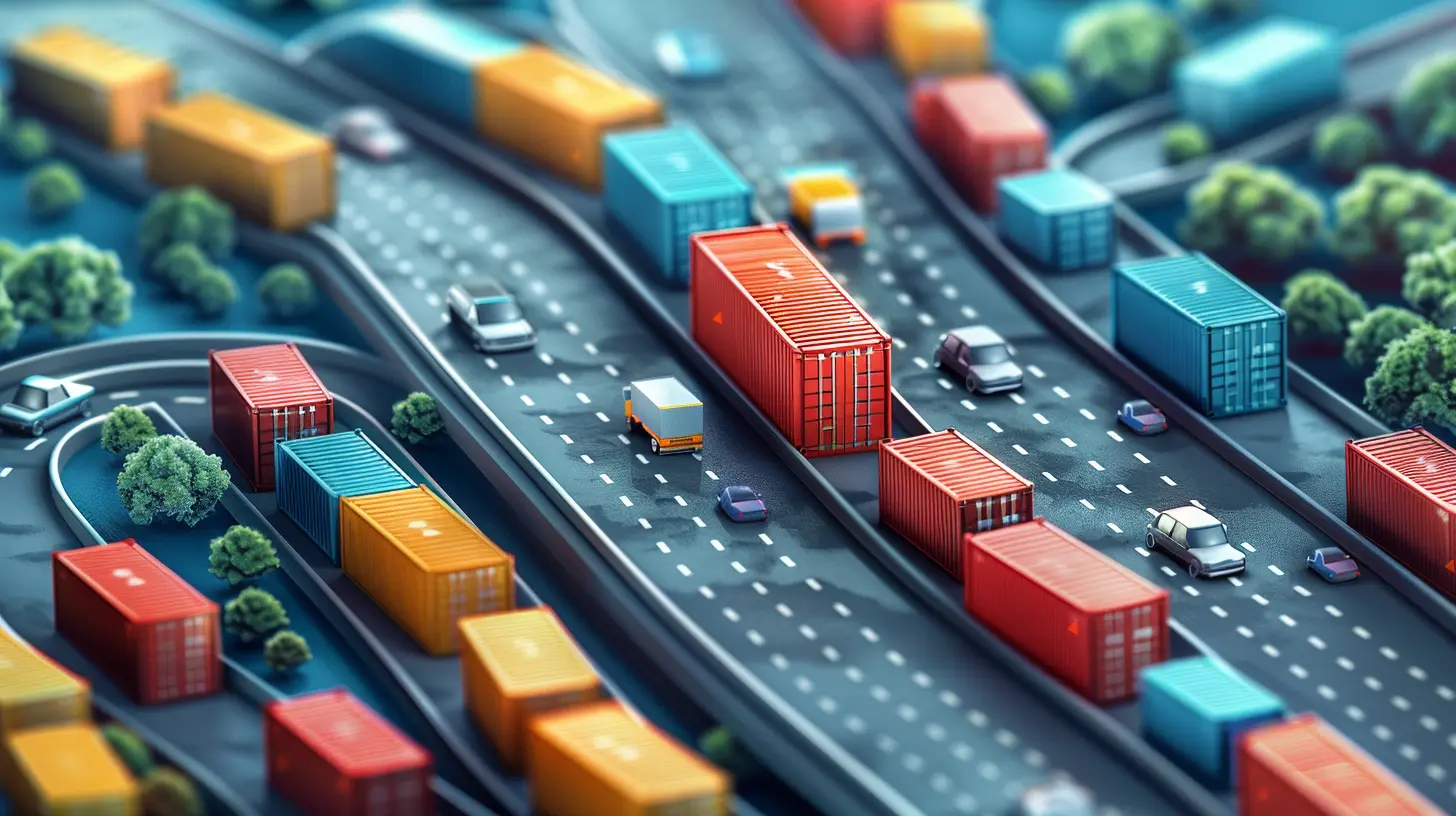Achieving Agility in the Supply Chain: A Competitive Advantage
6 August 2025
In today’s whirlwind world of commerce, the finish line is always moving. One moment, you're a leader in your industry; the next, you're scrambling to keep up. What separates the titans from the toppled? Two words: Supply Chain Agility.
If your supply chain is rigid, it's like trying to run a marathon in concrete shoes. But if it's agile? You're dancing through obstacles while your competitors trip over their shoelaces.
Welcome to the era where agility isn’t a luxury—it’s survival, strategy, and supremacy rolled into one.

What Is Supply Chain Agility, Anyway?
Let’s simplify this. Agility in the supply chain is the ability to move fast, adapt quickly, and respond precisely to changes in supply and demand. It’s not just about being fast—it’s about being smart and flexible.Imagine your supply chain as a river. Traditional models are like concrete canals—stiff and unyielding. An agile supply chain? That’s a free-flowing stream adjusting to weather, terrain, and tides, yet still reaching its destination.
We're talking about:
- Rapid response to market demands
- Flexibility to shift sourcing or distribution
- Real-time visibility and data-driven decisions
- Efficient risk management
Agility is essentially your business's reflex system—and the sharper it is, the stronger you stand in turbulent times.

Why Agility Is More Than Just a Buzzword
Let's cut through the fluff, shall we? Why should you care?Because markets are unstable.
Customer expectations change faster than a TikTok trend. Supply disruptions lurk behind every port and political shift. If your supply chain can't pivot, you're toast.
Agility transforms these threats into competitive advantages:
- A factory shut down in Asia? You switch suppliers in hours, not weeks.
- Demand for a product just spiked unexpectedly? You ramp up production before your rivals even realize what's happening.
- Shipping delays? You reroute with precision, while others get stuck in limbo.
Here's the truth: Only the fastest fish survive when the tide turns.

The Pillars of an Agile Supply Chain
So how does one transform a slow-moving dinosaur of a supply chain into a nimble ninja? It boils down to these five pillars:1. End-to-End Visibility
This is the heartbeat.If you can't see where your inventory is, what your suppliers are doing, or how your customers are behaving—you’re driving blindfolded.
Leverage tech like:
- Cloud-based supply chain platforms
- Internet of Things (IoT)
- Blockchain for transparency and traceability
- AI-driven analytics
Data is your GPS. Without it, you're just guessing.
2. Collaborative Supplier Relationships
Forget transactional. It's the age of collaborative supply chain ecosystems.Forge real partnerships with suppliers and logistics providers. Share data, forecast together, and even co-create solutions. When the storm hits, you'd rather have allies than adversaries.
Think of it like a band: each player brings a different instrument, but harmony only happens if everyone's in sync.
3. Demand Sensing and Forecasting
Here’s where the magic of machine learning and big data comes into play.Instead of relying on historical trends, agile supply chains use real-time demand sensing. This includes:
- Social media trends
- Point-of-sale data
- Weather patterns
- Global events
It's like having a sixth sense for demand—a superpower in a fickle market.
4. Technology and Automation
In an agile supply chain, technology is your silent workhorse. From automated warehouses to robotic process automation (RPA), the more you automate, the faster and more accurately you can respond.Imagine having a digital clone of your operations—working 24/7, never tiring, never slipping.
Bonus? Automation also reduces human error, boosts throughput, and drives down costs.
5. Flexible Logistics and Distribution
Cut the cord of rigid transport models. The new mantra: adaptive logistics.Use a mix of:
- Regional fulfillment centers
- Multiple carrier relationships
- Just-in-case inventory buffers
- Dynamic rerouting tools
When you can shift gears in real-time, you don’t just survive disruption—you dance through it.

Real-World Examples of Agile Supply Chains
Let’s not keep this purely theoretical. Who’s doing it right?Amazon
Of course, right? Amazon’s supply chain is a masterclass in agility. Local fulfillment centers, predictive analytics, AI-driven inventory placement—they’re always one step ahead.Zara
Fast fashion demands even faster logistics. Zara’s vertically integrated supply chain allows it to design, manufacture, and deliver a new clothing line in just 15 days. That’s agility stitched into every seam.Toyota
Toyota’s supply chain is legendary for its flexibility. When disaster struck after the 2011 earthquake in Japan, Toyota recovered faster than most due to their supplier redundancy and real-time communication systems.The lesson? Investing in agility pays off—especially when the unexpected hits.
Challenges in Building an Agile Supply Chain
Okay, it's not all roses and rainbows. While the rewards of agility are immense, the road to get there isn’t exactly paved in gold.Here are some hurdles you might face:
Resistance to Change
Let’s face it—people like comfort zones. Shifting to an agile model demands a cultural change, which can be met with internal pushback.Cost of Technology
Real-time data streams, AI, robotics, cloud platforms—they're not cheap. But the cost of not investing? Way higher in the long run.Integration Complexities
If your systems don’t talk to each other, forget agility. Aligning ERPs, CRMs, WMSs—it's like assembling a jigsaw puzzle where the pieces keep moving.Supplier Alignment
If your suppliers aren’t onboard, your chain's only as agile as the weakest link. Collaboration must be prioritized from day one.
Strategies to Drive Agility in Your Supply Chain
Agility doesn’t happen by luck—it’s built, piece by piece. Here's your blueprint:1. Conduct a Supply Chain Agility Audit
Start with self-awareness. Where are your bottlenecks? What slows you down? Are your lead times too long? Are you overly reliant on one supplier or region?2. Invest in Agile Tech Infrastructure
Don't skimp when it comes to technology. Digital twins, predictive analytics, control towers—these aren’t buzzwords. They’re your new best friends.3. Create Redundancy and Backup Plans
Agile doesn't mean lean to the point of fragility. Agile means having Plan B, C, and even D ready to roll.Multiple suppliers, diversified manufacturing bases, and flexible transportation means you’re never stuck.
4. Empower Decision-Makers
A rigid, top-down hierarchy slows everything. Agile organizations flatten the structure, enabling quicker decision-making across levels.Give your teams authority to act, adapt, and innovate in real-time.
5. Adopt Agile Methodologies
Borrow a page from the tech world. Use agile project management principles:- Short iterations
- Rapid feedback cycles
- Constant refinement
- Cross-functional collaboration
Supply chain operations benefit immensely from sprints over marathons.
Agility as a Long-Term Competitive Advantage
Here’s the golden nugget: Agility compounds.The more agile you become, the faster you adapt. The faster you adapt, the better your customer experience. The better your experience, the stronger your brand.
And guess what? Happy customers don’t leave.
In industries where margins are thin and competition fierce, agility becomes the moat around your castle.
The Future Belongs to the Agile
We’re entering a supply chain renaissance—a world powered by real-time responses, informed decisions, and frictionless movement of goods.In this brave new world, agility isn’t just a strategy—it’s your superpower.
So, ask yourself...
- Can your supply chain see changes coming?
- Can it respond on a dime?
- Can it recover from failure faster than your competitors?
If not, it’s time to trade in the old bones for something leaner, faster, and smarter.
Because the future doesn’t wait—and neither should you.
all images in this post were generated using AI tools
Category:
Supply Chain ManagementAuthor:

Remington McClain
Discussion
rate this article
1 comments
Monica McGlynn
This article offers valuable insights into enhancing supply chain agility. Emphasizing adaptability is crucial for gaining a competitive edge in today's dynamic market. Great read!
August 29, 2025 at 4:41 AM

Remington McClain
Thank you for your feedback! I'm glad you found the insights valuable. Adaptability truly is key in today's market.


